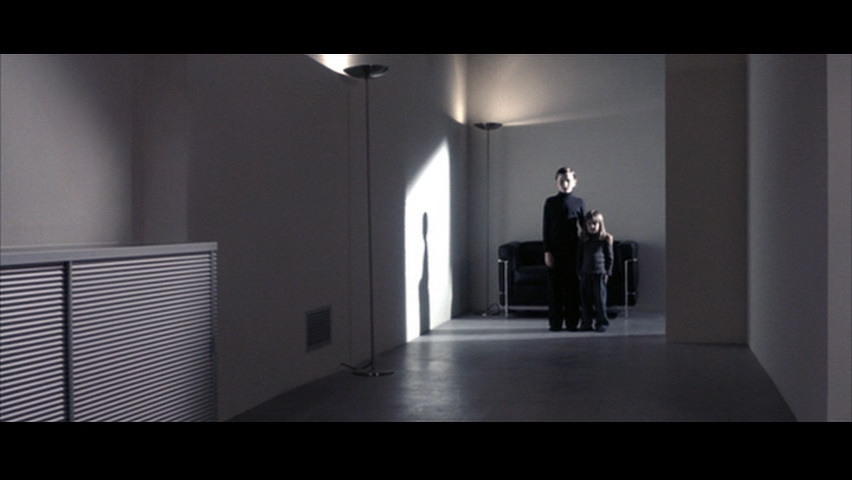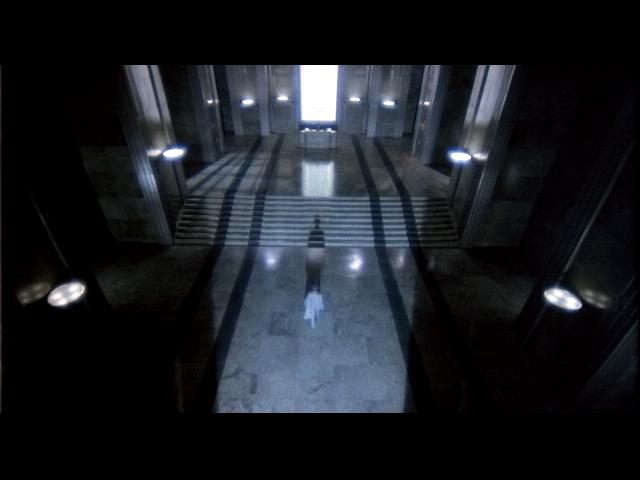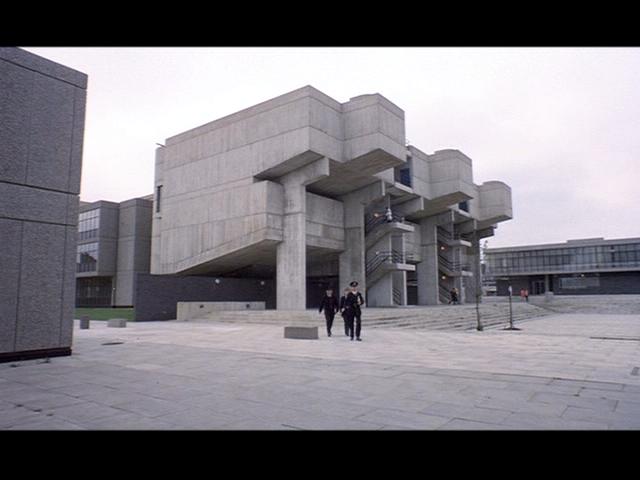Part 2
Part 1 - Preventing antagonism, creating madness
Three films from this term's course deal particularly with representations of socio-political systems which violently enforce what Kant might call excessively social relationships among men - that is to say, they repress the private, or unsocial characteristics of men in favor of the public, or social, order. Stanley Kubrick's A Clockwork Orange (1971), Terry Gilliam's Brazil (1985), and Kurt Wimmer's Equilibrium (2002) all make direct reference to fascist regimes notorious for the repression of private, or unsocial, behavior. In addition to the repression of privacy, these three films deal particularly with the elimination of the antagonism among men, the antagonism which Kant considered key to law-governed order in society.
The architecture of these three films is dichotomous: the 'official' world of public order is represented by tightly controlled and ordered 'minimalist' architecture and the repressed 'underworld' is represented by complex and contradictory architecture rife with texture and detail. This division of architectural styles and their particular relationship with socio-political structures has been discussed extensively in architectural criticism of the 20th century. The minimalist, machine-aesthetic of the modern movement, championed by the likes of Le Corbusier and Mies van der Rohe, was embraced by the fascist movements in Germany, Italy, and Russia between the 1920s and the 1950s. The atrocities of the Second World War soured popular support for much of the rhetoric surrounding this architectural movement and spawned a counter-movement, exemplified by architects such as Aldo Van Eyck, N. John Habraken and, later, Robert Venturi who believed that complex, even contradictory architecture would better represent the post WWII democratic and social-support movements.
 |
 |
 |
Equilibrium - The Minimalist Residence |
Brazil - Industrial Aesthetic Bureaucracy |
A Clockwork Orange - Brutalist 'Treatment' Facility |